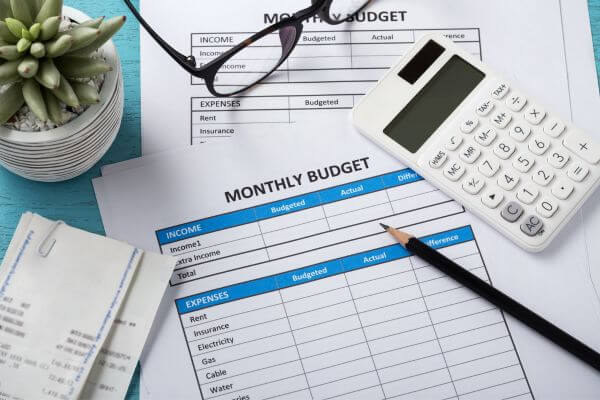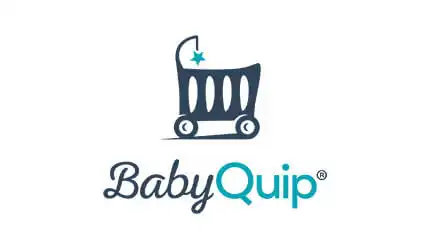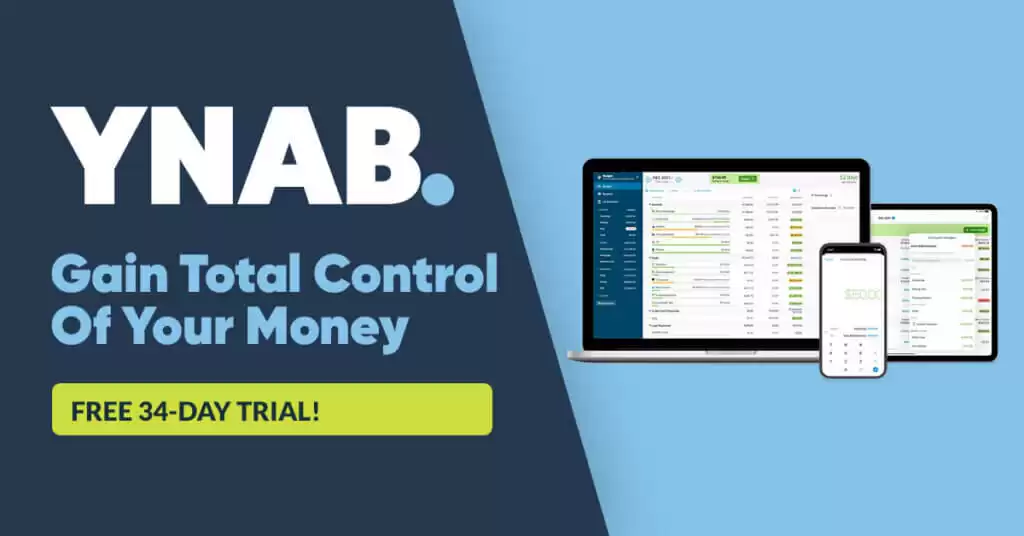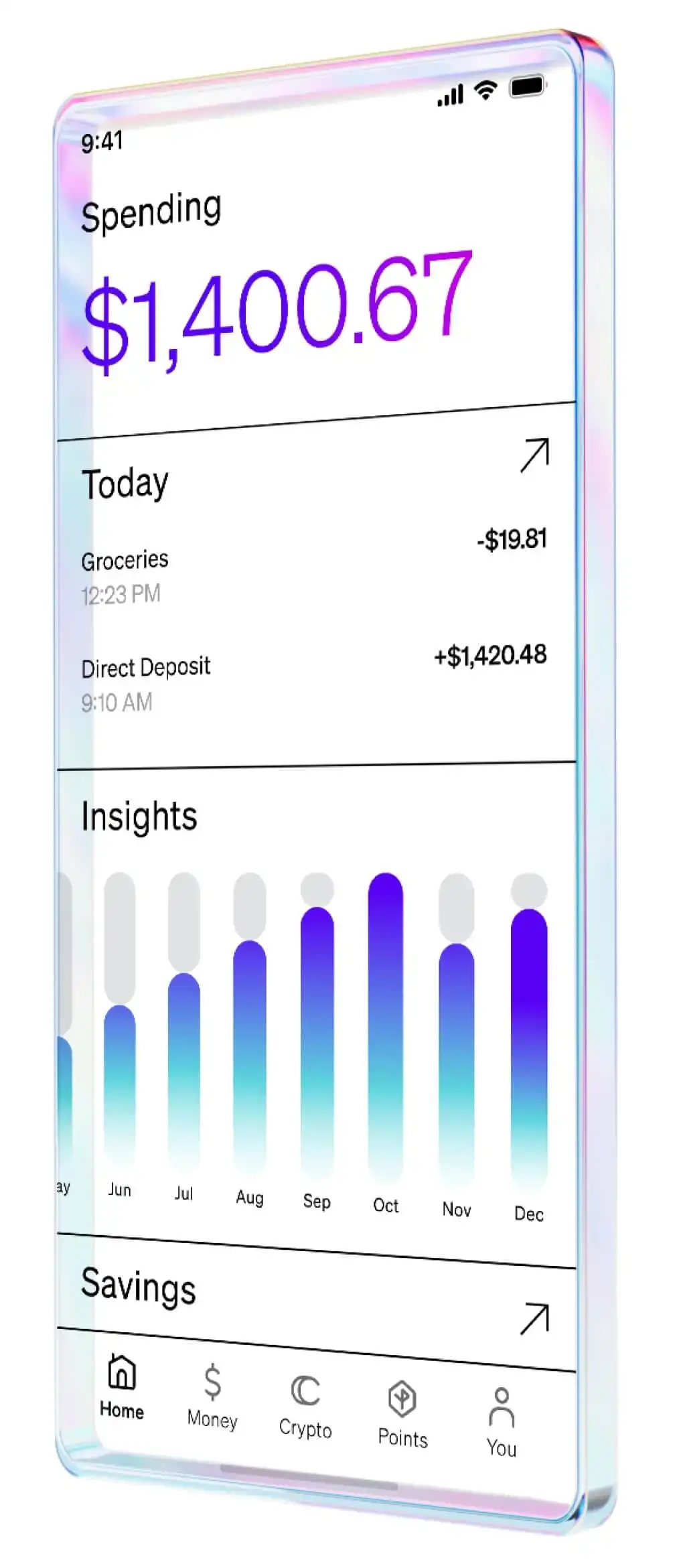How to Budget Money on Low Income: 20+ Tips to Cut Spending
Inside: Are you struggling to make ends meet on a low income? This guide will teach you how to budget money effectively on a low income, so you can live a comfortable life without having to skimp on important expenses.
Let’s face it… Navigating through the budgeting on a low income can often feel overwhelming.
The fear of insurmountable bills, the anxiety associated with rising living costs, and the overall foreboding nature of budgeting often make for a persistently stressful experience.
However, it is crucial to understand that you are not alone in this journey. I have been in your spot as well as many Money Bliss readers.
Regardless of how daunting the budgeting task may appear, we truly believe that with the right guidance and adherence to solid financial principles, you are capable of achieving financial peace of mind.
This process will simply require patience, persistence, and strategic planning.
This guide aims not only to shine a light on the struggles of budgeting with a low income but also to offer a beacon of hope.

This post may contain affiliate links, which helps us to continue providing relevant content and we receive a small commission at no cost to you. As an Amazon Associate, I earn from qualifying purchases. Please read the full disclosure here.
How to Budget Money on a Low Income
While it’s true that budgeting with a low income can be tough, proper money management can make it doable.
When you have less disposable income, it leaves you with less leeway in your budget. That’s why you have to be accountable and meticulously plan your spending to ensure financial stability.
So, let’s dig in and you can find success.
Step #1 – Figure out Your Monthly Income
Developing an effective budget starts with understanding your monthly income.
Here’s a step-by-step guide:
- List out all income sources: This includes all your regular paychecks, part-time jobs, side hustles, social security, child support, or any other form of income you have. If your income is irregular, say from commissions or seasonal work, it’s advisable to base your budget on your lowest monthly income.
- Account for taxes and deductions: To get an accurate picture of your disposable income, you need to factor in taxes and deductions from your earnings. You need to make sure you understand the difference between gross pay and net pay.
- Include irregular income: If you occasionally get money from gifts, or sporadically earn from passive income sources like investments, be sure to include these too. As these are inconsistent, it is best to fund discretionary spending with this money.
Personally, I recommend using your net income with budgeting. This will give you an accurate budget that you can truly follow.
This knowledge is powerful when it comes to effective budgeting.
Step #2 – Define your bills and Expenses

Knowing how much you spend and what you spend your money on is another crucial step in budget planning.
The key is to define ALL your bills and expenses. Here are the personal budget categories that cover almost everything you can think of.
Now, you must do the following:
- Identify your fixed costs: These are basics that you have to pay monthly and remain fairly constant, such as rent, car payments, and student loans.
- Consider flexible costs: These expenses vary from month to month. Examples include groceries, transportation, electricity, water, and gas bills.
- Remember periodic costs: Some costs only appear annually or semi-annually. For instance, insurance premiums, car registrations, and property taxes. It’s important to set aside money each month to cover these expenses when they arise. A sinking fund is great for these expenses.
- Account for daily spending: Beyond fixed and flexible bills, consider your day-to-day expenses like shopping, subscriptions, and entertainment. Be honest about the little expenses. It’s often the small, frequent purchases that can derail a budget.
- Prepare for unplanned costs: Finally, remember to budget for unexpected expenditures such as car repairs or medical bills.
By defining and categorizing your bills and expenses, you can see where your money is going and better manage your spending.
Step #3 – Reach a Zero Budget
A zero-based budget is a strategy that requires you to assign every dollar you earn to a specific expense or savings category, with the goal of having your income minus your expenses equal zero by the end of the month.
- Write down your income: From the step before, you already know your total monthly income.
- Subtract your expenses: Subtract the total of your monthly expenses (including savings) from your total monthly income. If you’ve correctly accounted for your income and expenses, the result should be zero. This is what it means to have a “zero-based budget”.
- Balance the budget: If your income and expenditure don’t balance, adjust your variable expenses and other discretionary spending until they do. This can involve cutting back on nonessential overspending, like takeout meals or unnecessary purchases.
- Allocate every dollar: With your budget balanced, each dollar should now have a purpose, whether it’s paying bills, going into savings, or providing for your daily needs.
Many people struggle to hit a zero based budget on the first try. It is common for your expenses to be higher than your income. Thus, a no spend challenge may help you identify what is important to actually spend your money.
Reaching a zero-based budget equips you with a clear picture of your financial status.
Thus, it allows you to use your money purposefully and prevents unnecessary spending. This way, even with a low income, you can still meet all your needs and work towards your financial goals.
You may be surprised to know how many months it takes for your budget to start working properly.
What do you do if your budget shows your expenses are more than your income?

When your monthly spending exceeds your monthly income, immediate attention is needed to prevent worsening financial issues. Before panic sets in, consider taking the following steps:
- Analyze your budget: Reevaluate and scrutinize your budget. There might be necessary adjustments overlooked or expenses incorrectly categorized. This will give you a clearer understanding of where your money is going.
- Prioritize essential expenses: Allocate money to necessities like housing, food, utilities, and debt repayments first. Other less necessary expenditures, like entertainment and dining out, can be reduced or eliminated.
- Reduce expenses: After prioritizing, identify areas where cuts can be made. Impulse buys, unnecessary subscriptions, or expensive habits might need to go.
- Increase your income: Consider part-time jobs, side hustles, selling unused items, or picking up freelance work to bring in more money.
- Seek advice if debt is weighing you down: As a last resort, you may look at ways to lower your interest rate on your debt. These strategies like debt consolidation or restructuring could help make your situation more manageable.
Remember, this situation, while stressful, is not permanent. With careful planning and disciplined execution, you can turn this around and regain financial stability.
You may have to start on a shoestring budget.
Taking Control of Your Budget When Income Doesn’t Cover Your Expenses

Now, this is where you need to learn to manage your money wisely. You are in control of where you spend your money.
Many truly believe with a higher income all of their financial problems go away. From my research, most people end up with bigger money problems, the same spending habits, and still living paycheck to paycheck even with a higher income.
So, let’s reign in what you can do today to make your budget feasible.
1. Prioritize Essential Bills and Expenses. The key is to identify which expenses are truly essential to your livelihood. All remaining expenses, like entertainment or eating out, should be considered secondary and only met after the primary expenses have been satisfied.
2. Participate in a No Spend Challenge. A No Spend Challenge not only helps you save money rapidly but also makes you cognizant of your spending habits, helps identify non-essential expenses, and guides you towards a minimalist, sustainable lifestyle. Start with a no spend month.
3. Reduce your Housing Expenses. Housing costs can be one of the most significant expenses. Look at ways to downsize, negotiate rent, refinance your mortgage, or get roommates. Or even housesit permanently.
4. Be Cognizant of Bad Spending Habits. Some examples include impulse purchases, expensive convenience, not comparison shopping, or paying too much. By becoming aware of your spending habits and making conscious choices, you can break the cycle of unnecessary spending and start saving money with the penny challenge.
5. Skip the Expensive Coffee Shop. Choosing to forgo your daily coffee shop run can result in surprisingly significant savings. Implementing just this one change could save you over $600 a year!
6. Use Public Transportation to Save Money. The costs of owning a car – gas, maintenance, parking, and insurance – can quickly add up. So, look for public transportation as an alternative or even cycling, carpooling, or walking.
7. Take Advantage of Free or Cheap Entertainment. When living with a low income, entertainment expenses can quickly eat into your budget. Good news for you! There are plenty of things to do that don’t cost money.
8. Cut Back on Grocery Spending. By implementing simple strategies such as meal planning, cooking at home, cutting down on processed food and reducing waste, you can maintain a healthy diet while significantly reducing your grocery bills. Don’t forget to use those discounts and coupons!
9. Stick to Your Shopping List. Preplan your purchases before stepping into a store. This is a powerful tool in curbing those impulse purchases which can inflate your expenses substantially.
10. Start Meal Planning. Meal planning is a practical and economical way to manage your food budget. By planning your meals for the week, you can control your grocery spending and eliminate waste.
11. Stockpile Goods That Will Stay Stocked Up Long Term. Remember, the goal of stockpiling is to save money, not to transform your home into a supermarket. Purchase enough to last a few months and focus on items that you’re certain to utilize. Here are the best foods to buy when broke.
12. Pack Your Own Lunch and Skip Eating Out. With an average meal out costing around $10, you could easily save $200 a month by packing lunch from home. Over a year, that’s $2,400 in savings!
13. Drink Water and Avoid Processed Foods. Shifting dietary habits can be a significant change, but your commitment to a healthier lifestyle can reap both health and financial dividends. It’s an investment in a life of wellness and economic sustainability.
14. Take Advantage of Discounts when Shopping. Remember, the goal of shopping with discounts is to spend less on what you need, not to buy more than you need. So, make sure to use coupons wisely, shop sales, buy off season, and use Cashback apps like Rakuten and BeFrugal.
15. Avoid Impulse Purchases. By avoiding impulse purchases, you give your budget room to breathe and create an opportunity for savings. This makes a significant difference over time, especially when money is tight.
16. Apply for Discounts on Utilities and Services. Many utility companies provide low-income home energy assistance programs. The same is true for internet service. Contact your service providers to check your eligibility.
17. Get Free or Discounted Goods Through Charities. Charities, faith, professional, and local organizations often offer grants for people experiencing financial hardship. Utilizing them can be a lifetime as they help you stretch your budget further and provide necessary support in times of financial struggle. Don’t be afraid or too proud to ask for help when you need it.
18. Get Outside. Reconnecting with nature can provide you with cost-free entertainment and a sense of tranquility that’s hard to find elsewhere.
19. Avoid Unnecessary Expenditure. While each person’s definition of “unnecessary” may differ, the key to budget management is curbing expenditures that don’t add substantial value to your life. A common culprit could be brand-name goods or late fees.
20. Start the Practice of Saving with a Mini Savings Challenge. The Mini-Savings Challenge can pave the way to a habit of saving regularly, even on a tight budget. Essentially, this challenge consists of setting aside a small amount of money each day or week, gradually increasing the amount over time.
21. Show Gratitude. While it may seem less directly related to finance, practicing gratitude is indeed integral to efficient budgeting and financial wellness. Remember, financial success isn’t just about making more money. It’s also about appreciating what you have and recognizing the steps you’re taking towards your goals.
Inciting Additional Income Avenues

Okay, this section is how you take a low income and increase your money. While cutting back spending is helpful, creating more money will help you to reach money success faster. This will take the strain off.
1. Look for Ways to Earn Extra Income
Boosting your income, no matter how minimal the increase, can help cover necessary costs and elevate your financial standing.
Here are some ideas using your current job:
- Work Overtime: If possible, consider getting more extra hours at your current job. Earnings from overtime or extra shifts can be significant.
- Negotiate a Raise: If you’ve been with a company for a while and demonstrated your worth, it might be time to discuss a raise. Prepare well for this conversation with evidence of your productivity and value.
Every extra dollar earned can be put towards savings, paying down debt, and creating better financial stability.
2. Leverage Side Hustles for Extra Money
Side hustles have become an increasingly popular way to earn extra money online in your spare time. They allow for flexibility and can be a great supplement to your current income.
- Start a Side Hustle: These can be a great way to make use of spare time to earn extra cash. This could be anything from driving for a rideshare company, offering freelance services, tutoring, delivering food or groceries to selling homemade goods online.
- Sell Unused Items: You probably have items in your home that you no longer need. Selling anything from clothes to electronics or furniture can be a good source of income.
- Passive Income: From writing an eBook to renting out a room in your house or investing in stocks, creating passive income streams can provide extra money over time.
Remember to choose a side gig that fits your schedule, interests, and skill set. Not only could it bring in extra money, but it could also turn into a passion project, making the work feel less like a chore.
3. House Sit for Extra Income

House sitting can be a viable option for those looking to generate extra income, especially if you’re flexible with your time and location. It typically involves looking after someone’s home (and sometimes their pets) while they’re away.
Not only is house-sitting a way to earn money, but it can also offer a free place to stay. Hello – you just lowered the biggest expense in your budget. However, remember that taking care of someone else’s home is a huge responsibility, so only take on tasks you’re confident you can handle.
Get started by building your profile on Trusted Housesitters.
Stay for free with adorable animals in unique homes around the world. Sit as often as you like, wherever you like.
4. Items You Don’t Need Anymore
Selling items you no longer need or use can both declutter your home and add to your income. It doesn’t just have to be big-ticket items; even small routine household items can yield returns.
While this may be difficult to do, look for items in good condition that you and your family no longer need or use. If you have extra baby stuff, you can rent it on BabyQuip for extra money.
Remember, while selling items won’t provide a consistent income, it can be a great one-time source of extra cash especially if you have these highly popular flipping items in your house.
Have you heard about BabyQuip? They are the #1 baby equipment rental service offering clean, safe, and insured baby gear.
Whether you are traveling or just don't want to purchase, this is a great idea to check out.
5. Pick up a Part-time Job
When you’re on a limited income, picking up a part-time job can be a reliable way to supplement your earnings. You are trading your time for money.
Many of these jobs that pay weekly offer valuable experiences, skills, and possibly even room for growth and advancement. Remember to save and plan for any taxes due as a result of your increased earnings.
Smart Use of Technology in Budgeting

Taking advantage of personal budgeting tools can make managing your finances easier. They can help track expenses, create a budget, and set saving goals. Here are some popular options:
- You Need a Budget (YNAB): YNAB helps you create a budget and live within your means, educating you on effective money management along the way.
- Simplifi by Quicken: This app crunches the numbers to show how much money you have for day-to-day spending after accounting for bills, goals, and savings.
- Empower: This free tool offers a comprehensive financial dashboard that includes budgeting features and investment tracking.
- Tiller Money: If you want a more manual approach, you can use Google Sheets or Excel to create a customizable budget spreadsheet.
Remember, the best tool is the one you use consistently. Try a few options to see which one best meets your needs and preferences. Every tool has its pros and cons, but all aim to help you control your finances effectively.
Empower Personal Wealth, LLC (“EPW”) compensates Money Bliss for new leads. Money Bliss is not an investment client of Personal Capital Advisors Corporation or Empower Advisory Group, LLC.
Enjoy guilt-free spending and effortless saving with a friendly, flexible method for managing your finances.
- Comprehensive approach to budgeting, helping you plan monthly budgets based on your income.
- Offers expert advice, making it suitable for those who require an in-depth, forward-thinking budgeting strategy.
- Superior synchronization skills make it the winner in this area.
- YNAB has extra features like goal setting for budgeting, shared budgeting tools for partners.
- Option to manually add and upload transactions from accounts each month.
- YNAB prioritizes user privacy.
Access Paychecks Early with Digital Banking Apps
With the rise of digital banking, access to innovative financial tools like early direct deposit has become more accessible, even for those with low incomes. These services can be crucial lifelines between paychecks or in case of emergencies.
Here are a few platforms that offer such services:
- Chime: Once you set up direct deposit with Chime, you may get your paycheck up to two days earlier than at a traditional bank.
- Current: Current, a mobile bank account, provides users with paychecks up to two days in advance.
- Varo: Varo also offers early direct deposit for its users, helping you gain access to your money more quickly.
- Clair: Clair’s on-demand pay solution lets you advance a portion of your paycheck before payday. This can be particularly helpful when navigating financial crunches.
It’s important to note that while accessing your paycheck early doesn’t give you extra money, it does provide more flexibility in managing your finances and can help avoid overdraft fees or high-interest loan options in times of need. As with any financial tool, it’s essential to use early paycheck access wisely and not rely on it for regular spending.
Build your money future with Current. Get paid faster, build your credit history, earn points, and more - all in one place.
Plus boost your savings with high interest rates on your savings, save automatically with Round-Ups, set your goals, and more.
FAQs
Now, How do you Survive on a Low Budget?

Surviving on a low income involves careful planning, budgeting, and making the most of available resources. While it may seem challenging, it is indeed possible.
Every small step you take towards frugal living, such as sticking to a budget, reducing unnecessary expenses, or earning extra cash, can lead to considerable savings in the long run.
Remember, it’s also important to invest in yourself – whether that’s asking for a raise at work, learning a new skill, or starting a side hustle.
The journey of living on a low income can be tough, but it also offers an opportunity for creativity and gratitude for the essential things in life. With a positive mindset, some patience, and careful budgeting, you can not only survive but thrive, even on a low income.
The goal isn’t to just get by but to build a financially stable future.
Now, learn the best ways to save money fast on a low income!
Did the post resonate with you?
More importantly, did I answer the questions you have about this topic? Let me know in the comments if I can help in some other way!
Your comments are not just welcomed; they’re an integral part of our community. Let’s continue the conversation and explore how these ideas align with your journey towards Money Bliss.






